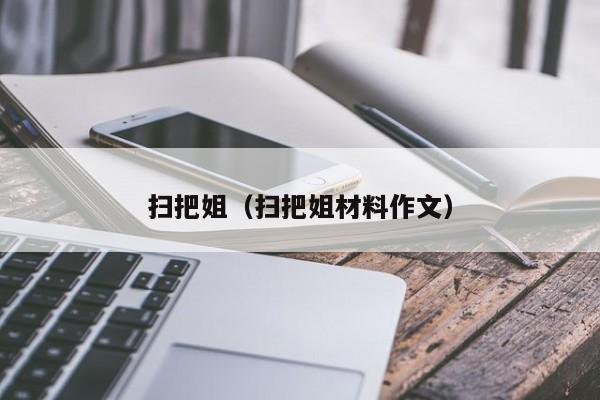
本文目录
实用帖:新西兰技术移民,如何准备ITA材料
1. INZ1104表格
此表格中包含了申请人在递交EOI时填报的信息,如有其它增补或修改的信息,可以在此表的Amendments or New Information部分进行增补。同时,在这份申请表中,申请人和全部副申请人,需要提供符合要求的彩色照片以及本次申请费2710纽币(当年数额)的详细付款方式和信息。
2. INZ1209表
此表格用于本申请中所有年龄达到17周岁的申请人(含副申请人),需要注意的是,在填表中不能出现时间间隔(Gap)。例如,在所有填报的学历和工作历史中,没有进行工作和学习的阶段,需要列出并填报当时的经济来源。
3. 出生证明
所有包含在此申请中的申请人,均需要提供出生证明,证明必须显示出其父母的名字,且有认可的英文翻译。
4. 护照
需提供本次申请中包含的所有申请人的护照信息页和签字页。由于技术移民进程时间一般较长,为了避免丢失或影响出行,建议大家在递交认证后的护照信息页和签字页即可。
5. 体检报告
需提供本次申请中包含的所有申请人的体检报告,如果距上一次递交给移民局体检报告的时间,在36个月以内,则可以不用递交。
6. 无犯罪证明
需提供本次申请中包含的所有17周岁及以上申请人的无犯罪证明。包括国籍国家和近十年内累计居留达到12个月的国家。其中中国的无犯罪证明,除了原件之外,还需提供原件的第三方独立机构翻译和公证书。这一部分,往往耗时较长,某些国家无犯罪证明的获取时间会长达几个月。而无犯罪证明一旦开出,半年内不递交成功则失效。大家可以合理把握时间,提前做好准备。
7. 英语成绩
根据EOI阶段申报的信息,需要英语成绩的申请人(含副申请人)提供凭证。
8. 工作合同
提供申请人雇佣双方签字的内含申请人工作细则的工作合同。
9. INZ1235表格
由申请人的工作雇主来填写,内含一些雇用公司和申请人工作信息。
10. 学历
对于申请学历加分的学历,申请人需要提供学历学位证书等证明材料。注意如果不是新西兰本地学历,且毕业院校不在NZQA豁免名单中,则必须提供NZQA学历认证。此认证耗时较长,如有需要建议提前准备。
11. 过往工作经验证明材料
如果申请人在EOI阶段申报了过往工作经验加分,这里需要提供相应的工作材料。这一部分材料相对复杂,移民局对它的审核也比较严额,准备起来需要格外用心。如果自己不是很有经验,建议找专业人士协助办理。
12. 配偶关系证明材料
如果此次技术移民申请中带了配偶,此时还需递交证明主副申请人配偶关系的材料。需要注意的是,配偶关系材料务必充实而详尽,不能仅仅是结婚证。由于中西方深层次的文化归属差异,新西兰移民局在判定配偶关系的真实稳定性时,更注重实际性的材料,比如生活合影,联名账户消费等等。
欧盟标准中的A1和AC是什么意思
AC=amendments corrigendum A1=amendments 1 其实就是欧盟标准的增补内容!
商务英语,信用证流程图的英文描述
信用证流程图英文描述:
The following is a step-by-step description of a typical Letter of Credit transaction:
1. An Importer (Buyer) and Exporter (Seller) agree on a purchase and sale of goods where payment is made by Letter of Credit.
2. The Importer completes an application requesting its bank (Issuing Bank) to issue a Letter of Credit in favour of the Exporter. Note that the Importer must have a line of credit with the Issuing Bank in order to request that a Letter of Credit be issued.
3. The Issuing Bank issues the Letter of Credit and sends it to the Advising Bank by telecommunication or registered mail in accordance with the Importer’s instructions. A request may be included for the Advising Bank to add its confirmation The Advising Bank is typically located in the country where the Exporter carries on business and may be the Exporter’s bank but it does not have be.
4. The Advising Bank will verify the Letter of Credit for authenticity and send a copy to the Exporter.
5. The Exporter examines the Letter of Credit to ensure: a) it corresponds to the terms and conditions in the purchase and sale agreement; b) documents stipulated in the Letter of Credit can be produced; and c) the terms and conditions of the Letter of Credit may be fulfilled.
6. If the Exporter is unable to comply with any term or condition of the Letter of Credit or if the Letter of Credit differs from the purchase and sale agreement, the Exporter should immediately notify the Importer and request an amendment to the Letter of Credit.
7. When all parties agree to the amendments, they are incorporated into the terms of the Letter of Credit and advised to the Exporter through the Advising Bank. It is recommended that the Exporter does not make any shipments against the Letter of Credit until the required amendments have been received. 8. The Exporter arranges for shipment of the goods, prepares and/or obtains the documents specified in the Letter of Credit and makes demand under the Letter of Credit by presenting the documents within the stated period and before the expiry date to the “available with” Bank. This may be the Advising/Confirming Bank. That bank checks the documents against the Letter of Credit and forwards them to the Issuing Bank. The drawing is negotiated, paid or accepted as the case may be.
9. The Issuing Bank examines the documents to ensure they comply with the Letter of Credit terms and conditions. The Issuing Bank obtains payment from the Importer for payment already made to the “available with” or the Confirming Bank.
10. Documents are delivered to the Importer to allow them to take possession of the goods from the transport company. The trade cycle is complete as the Importer has received its goods and the Exporter has obtained payment. Note: In the diagram below, the Advising Bank is also acting as the Confirming Bank.
美国CLIA和CAP认证的区别
美国CLIA和CAP认证的区别
一.什么是CLIA
CLIA是Clinical Laboratory Improvement Amendments的缩写,即临床检验改进修正计划。CLIA实验室主要有三个机构监管,分别是医疗保险和医疗补助服务中心(CMS)、疾病控制和预防中心(CDC)、美国食品和药物管理局(FDA)。
A:CMS负责所有财务管理和计划的行政管理,包括认证和收费、检查、执法、评审和国家豁免的批准、PT计划的批准,并制定规则。
B:CDC负责指导CLIA相关研究,并为CMS提供科学及技术支持和咨询服务。 C:FDA负责对临床实验室检测项目进行分类;管理某些诊断试剂/材料、实验室信息系统使用的某些软件;并监管体外诊断试剂盒上市。
通过CLIA认证,意味着临床实验室试验结果的准确性、可靠性和时效性都将得到CLIA国际标准的认可,从而为其承接更多临床试验项目铺平道路。也意味着CLIA实验室能够根据市场的现实需求,可以快速的开发LDTs(lab developed test)并使之在临床上得到应用以给予临床指导。目前,美国有近80%的实验室通过了CLIA认证,CLIA认证自从1992年实行来,目前全美有23.2万家实验室获得该项资质。 二.什么是CAP认证
常说的CAP(COLLEGE OF AMERICAN PATHOLOGISTS)认证是指由美国病理学会对临检实验室进行的认可活动,认可依据的标准是CAP自己制定的文件,主要参照了美国临检中心(NCCLS)的业务标准和操作指南。
CAP是专由临床检验学家和病理学家组成的联合会,被公认为是医学实验室质量保证的领导者之一。CAP的一个重要内容就是向世界各地的参与实验室开展能力验证活动(Proficiency Testing, PT也称为室间质评)。通过室间质评和实验室实地评审进行CAP认证。CAP认证依据是CAP自己制定的标准,即评审检查要点(CHECKLIST),它主要参照了CLIA-88 的标准和美国的法律法规。CAP的室间质评结果是作为医学实验室执业许可或认证的依据。目前(2009年底) 全球已有200多个国家和地区的公立和私立实验室通过了CAP认证,中国现有11家实验室通过了CAP认证,其中4家为医院检验科,7家为商业实验室。 三.CLIA和CAP认证的区别
CAP认证由美国病理医师学会颁发实验室资质证书。认可依据的标准是CAP自己制定的文件,主要参照了美国临检中心(NCCLS)的业务标准和操作指南。由于CAP的认可标准要求的技术水平不是国际性的要求,尤其是其所引用的法律基础是美国的相关法律,因此,不被世界上绝大多数的国家所采用。实验室认可相关国际组织已经要求各国认可机构使用ISO/IEC17025或15189作为对医学实验室认可的依据。ISO15189由各国的相应组织颁发证书,比如我国的CNAS。鉴于上述原因,我国认可机构并不承认CAP的认可结果。而CLIA认证由美国临床实验室委员会颁发实验室资质证书,表明该实验室符合美国联邦政府实验室修正案的相关规定,达到优质实验室标准。CLIA认证也代表了目前国际最高水平的认证标准。
CLIA认证最独特的地方在于,实验室的LDTs项目在即使没有FDA批准的情况下也完全可以在其实验室范围内提供分子检测业务以指导临床。当然,如果外售还需要得到FDA的批准才行。而仅是得到CAP、ISO15189认证的实验室如果产品没有得到FDA的批准是完全不能在临床上应用的。

 支付宝扫一扫
支付宝扫一扫 微信扫一扫
微信扫一扫
















